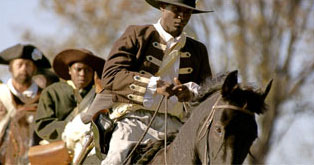| |
Originally named Titus, Tye was one of four slaves owned by Quaker John Corlis of Monmouth County in New Jersey. Corlis was one of the few Quakers that refused to follow the custom of educating or freeing their slaves by their 21st birthday. Tye’s owner was known to be especially cruel to his slaves, frequently using the whip.
After Lord Dunmore’s Proclamation to offer freedom to those slaves that would join the royal forces, 22 year old Tye, along with 300 other escaped slaves fled to join the British troops in Norfolk. Although the British did not officially commission black officers, Tye
|
 |
| |
soon earned their respect and was eventually promoted to Captain of the Ethiopian Regiment and Commander of the Black Brigade.
Colonel Tye soon became notorious for his ruthless guerilla tactics during the war. His small mixed race band of guerillas conducted raids and assassinations across New Jersey. In the summer of 1779, they conducted several raids on Shrewsbury in which they attacked and plundered patriot homes taking clothing, furniture, horses, and cattle. Tye was able to use his knowledge of the county’s waterways in order to conduct these raids. Often, the group would target their former masters and seek revenge. The group was often rewarded with five gold guineas by the British.
During the winter of 1779, Tye was commander of a group of twenty-four black Loyalists known as the Black Brigade. They became infamous for their ruthless raids against the patriots. The group not only seized supplies, they assassinated many American leaders. Joined by the British unit, the Queen’s Rangers, they freed many slaves.
In September, 1780, Tye was shot in the wrist during a surprise attack on the home of Captain Josiah Huddy. Although his wound was minor, his injury proved to be fatal when lockjaw set it.1
|



